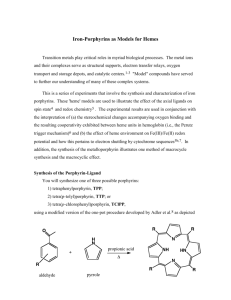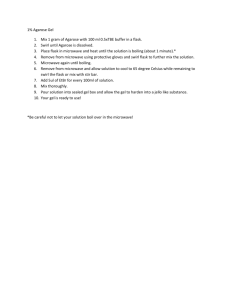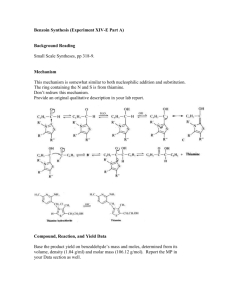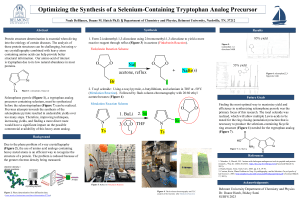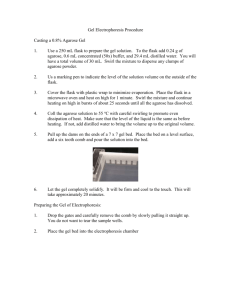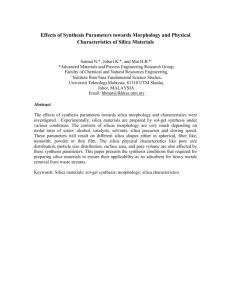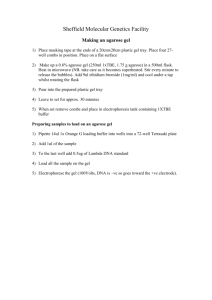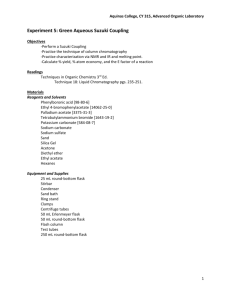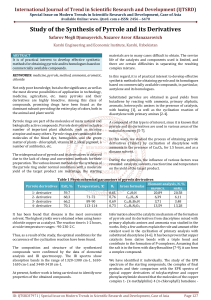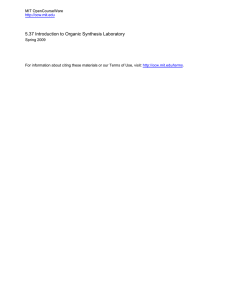3 porphyrin
advertisement
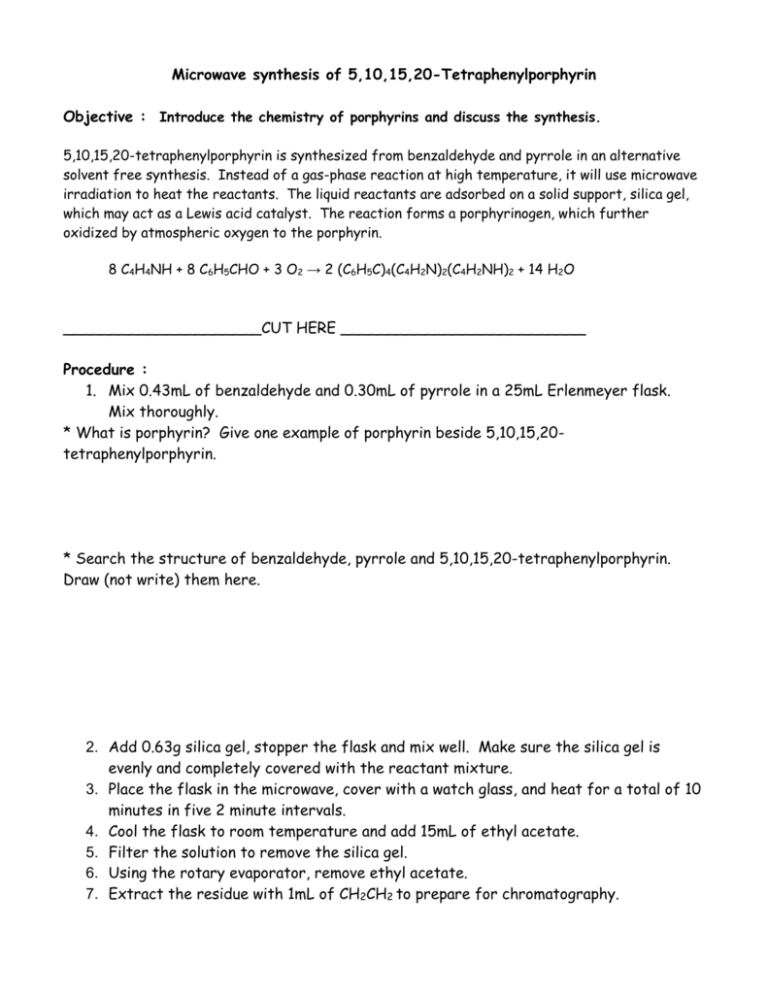
Microwave synthesis of 5,10,15,20-Tetraphenylporphyrin Objective : Introduce the chemistry of porphyrins and discuss the synthesis. 5,10,15,20-tetraphenylporphyrin is synthesized from benzaldehyde and pyrrole in an alternative solvent free synthesis. Instead of a gas-phase reaction at high temperature, it will use microwave irradiation to heat the reactants. The liquid reactants are adsorbed on a solid support, silica gel, which may act as a Lewis acid catalyst. The reaction forms a porphyrinogen, which further oxidized by atmospheric oxygen to the porphyrin. 8 C4H4NH + 8 C6H5CHO + 3 O2 → 2 (C6H5C)4(C4H2N)2(C4H2NH)2 + 14 H2O _____________________CUT HERE __________________________ Procedure : 1. Mix 0.43mL of benzaldehyde and 0.30mL of pyrrole in a 25mL Erlenmeyer flask. Mix thoroughly. * What is porphyrin? Give one example of porphyrin beside 5,10,15,20tetraphenylporphyrin. * Search the structure of benzaldehyde, pyrrole and 5,10,15,20-tetraphenylporphyrin. Draw (not write) them here. 2. Add 0.63g silica gel, stopper the flask and mix well. Make sure the silica gel is evenly and completely covered with the reactant mixture. 3. Place the flask in the microwave, cover with a watch glass, and heat for a total of 10 minutes in five 2 minute intervals. 4. Cool the flask to room temperature and add 15mL of ethyl acetate. 5. Filter the solution to remove the silica gel. 6. Using the rotary evaporator, remove ethyl acetate. 7. Extract the residue with 1mL of CH2CH2 to prepare for chromatography. _____________________CUT HERE __________________________ Prelab Questions : (PL1) Look up at least one site that gives the gas-phase high temperature synthesis of porphyrin. Site the source. (PL2) Very briefly write the procedures from question above. (PL3) List at least two reasons why the method used for this lab is ‘greener’ than the traditional gas-phase high temperature method. (PL4) What is the theoretical mass of 5,10,15,20-tetraphenylporphyrin that should be produced? Density: 1.0415 g/mL for benzaldehyde and 0.967 g /mL for pyrrole. (PL5) Assuming this procedure affords a 5% yield, how many mL of pyrrole and benzaldahyde would you need to prepare 100.mg of tetrapheylporphyrin? Post lab Questions : (Q1) Comparing to the conventional gas-phase high temperature method, name at least 2 disadvantages associated with this method. Summary : Write an abstract for the lab. It should include at least the objective, materials, procedure, results and discussion.
